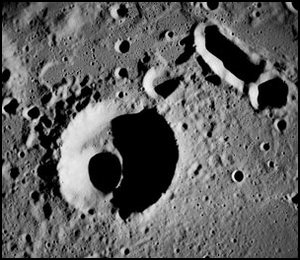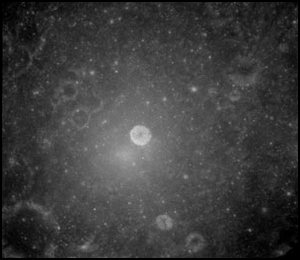-
 Mike Collins (CAPCOM)
Mike Collins (CAPCOM)
-
Roger for Bill. He can go ahead and do his standard reservice on the water now. It's looking good.
-
 Mike Collins (CAPCOM)
Mike Collins (CAPCOM)
-
Roger. We are still dumping your tapes. The voice quality on high bit is coming through superb, and you are GO for the next rev. And we would like to get a brief status report on your rest between 60 hours and LOI 1, just to fill in some information for us.
-
 Frank Borman (CDR)
Frank Borman (CDR)
-
We're tired right now, but we will have to wait until TEI before we get back to the regular cycle.
-
 Bill Anders (LMP)
Bill Anders (LMP)
-
Okay, Houston. The water boiler has been reserviced, back pressure valve CLOSED for 1 minute, water ON for 2, and it's now steam pressure AUTO, H2O flow AUTO.
-
 Bill Anders (LMP)
Bill Anders (LMP)
-
If we have a problem, a similar problem, again on the back side in the sunlight, might be a good idea to crank the secondary loop until we have AOS. What do you think about that?
-
 Mike Collins (CAPCOM)
Mike Collins (CAPCOM)
-
Roger, Jim. In regard to your evaporator, we feel that if you do have a similar problem next time on the back side in sunlight, check the evaporator outlet temperature, and if it gets above 60, we concur that it would be a good idea to bring up the secondary loop. Over.
-
 Mike Collins (CAPCOM)
Mike Collins (CAPCOM)
-
Apollo 8, Houston. When we say bring up the secondary loop, we mean bring up the evaporator only on the secondary loop. Copy?
-
 Mike Collins (CAPCOM)
Mike Collins (CAPCOM)
-
Roger. We got the Interstellar Times here, the December 24 edition. Your TV program was a big success. It was viewed this morning by most of the nations of your neighboring planet; the earth. It was carried live all over Europe, including even Moscow and East Berlin, also in Japan and all of North and Central America and parts of South America. We don't know yet how extensive the coverage was in Africa. Are you copying me all right? Over.
-
 Frank Borman (CDR)
Frank Borman (CDR)
-
You are loud and clear.
-
 Mike Collins (CAPCOM)
Mike Collins (CAPCOM)
-
Good. San Diego welcomed home today the Pueblo crew in a big ceremony. They had a pretty rough time of it in the Korean prison. Christmas cease-fire is in effect in Viet Nam, with only sporadic outbreaks of fighting. And if you haven't done your Christmas shopping by now, you better forget it.
-
 Jim Lovell (CMP)
Jim Lovell (CMP)
-
Mike, I think I can say it without contradiction, it's been a mighty long dry spell up here.
-
 Mike Collins (CAPCOM)
Mike Collins (CAPCOM)
-
We will get you the number after a while on your water dump. It looks like the quantity isn't increasing very slightly, and we're considering not only the quantity in regard to the dump, but also its effects on the trajectory relative to TEI and so forth, but we will have a good answer for you shortly.
-
 Frank Borman (CDR)
Frank Borman (CDR)
-
We are not just thinking about the waste water tank: we're thinking about some other kind of water that has to get dumped out of the spacecraft, slightly used water.
-
 Mike Collins (CAPCOM)
Mike Collins (CAPCOM)
-
Roger. We have about three and a half minutes to LOS. We give you back the DSE under your control, and in regard to your water dump, we are tentatively predicting a waste water tank dump at about 80 hours GET and any other dumps are at your discretion, any time you would like to make them.
-
 Mike Collins (CAPCOM)
Mike Collins (CAPCOM)
-
People listening to the high bit rate down here say it's like sitting in your living room listening to good hi-fi.
-
 Mike Collins (CAPCOM)
Mike Collins (CAPCOM)
-
Apollo 8, Houston. Coming up on 2 minutes to LOS. We got a good reservice on the primary evaporator, and everything is still looking very good down here.
Expand selection down Contract selection up -
 Mike Collins (CAPCOM)
Mike Collins (CAPCOM)
-
Apollo 8, Houston. One minute to LOS. Are you still reading us loud and clear?
-
 Mike Collins (CAPCOM)
Mike Collins (CAPCOM)
-
Okay, fine. We've been noticing a little bit of increase in our background noise as you approach backside.
-
 Bill Anders (LMP)
Bill Anders (LMP)
-
Roger. Looks like the evaporator—looks like the evaporator is holding okay, or at least it is trying to. It dropped the temperature down to about 32, and now it's come back up again and stabilized at about 42 degrees.
-
 Jim Lovell (CMP)
Jim Lovell (CMP)
-
Roger. Houston, this is Apollo 8. What we are doing on the control point tracking—I managed to look for a CP-1 at the same time we were trying to do a CP-2 on this rev. I picked up two marks which are just as small, but more easily recognizable, than the ones that were given to me. I know that I can repeat the process and pick the same small point on the next rev. Now I can try to look for the control points that are written down, but I think that I have better control over the ones that we have.
-
 Jim Lovell (CMP)
Jim Lovell (CMP)
-
Roger. One more point: the control point times which you have given me are a little bit off, and I can notice by comparing these maps that these maps are not too well aligned either.
-
 Mike Collins (CAPCOM)
Mike Collins (CAPCOM)
-
Roger. These two small points that you can repeat your marks on: will you be able to identify those precisely on a map? Over.
-
 Jim Lovell (CMP)
Jim Lovell (CMP)
-
That's affirmative; that is why I picked them. They are both—they're both very prominent features, and they are both very small craters about the same size as the ones we are looking for, but I can pinpoint them on a map.
-
 Jim Lovell (CMP)
Jim Lovell (CMP)
-
Roger. One more comment: as it offered a lot of controversy at data priority meetings, it looks like 10 degrees pitch up is the best attitude to obtain the horizon so that you can follow the landmark down through the scanning telescope. If you pitch down any more, full up trunnion will not get the horizon, and the horizon is a great help in leading yourself into the control point.
-
 Mike Collins (CAPCOM)
Mike Collins (CAPCOM)
-
Jim, we concur with your use of the two small craters which you can repeatedly mark on and find on the map; and also if you will give us your new latitudes and longitudes, we can compute for you a time of closest approach to those points with the spacecraft 10 degrees pitched-up. Over.
-
 Jim Lovell (CMP)
Jim Lovell (CMP)
-
Roger, Houston. CP-1 latitude minus 606269, longitude over 2, minus 78954, altitude plus 00152; for CP-2 latitude minus 09638, longitude over 2, plus 81691, altitude minus 00007. I tried to get CP-3 at the same pass, but I let it go by to get set up for this first track at the landing site.
-
 Mike Collins (CAPCOM)
Mike Collins (CAPCOM)
-
Roger, Houston. CP-1: would you say again the latitude, and on CP-2, say again the longitude CP-2, please?
-
 Jim Lovell (CMP)
Jim Lovell (CMP)
-
Roger. CP-1 latitude minus 06269; that is the latitude; and for longitude over 2 for CP-2, plus 81691.
-
 Jim Lovell (CMP)
Jim Lovell (CMP)
-
And it appears so far, Houston, that no spacecraft pitch motion is required to get five marks on the target in plenty of time.
-
 Mike Collins (CAPCOM)
Mike Collins (CAPCOM)
-
Roger. I am about 15 minutes early with the TEI fix update and the map update. I will have them here whenever it's convenient for you to copy.
-
 Mike Collins (CAPCOM)
Mike Collins (CAPCOM)
-
Roger. We would like to ask you to stop using AUTO OPTICS on the pseudo landing site. It's necessary that we send you up a P27 to update the RLS values stored in the computer. Over.
Spoken on Dec. 24, 1968, 5:35 p.m. UTC (56 years ago). Link to this transcript range is: Tweet


